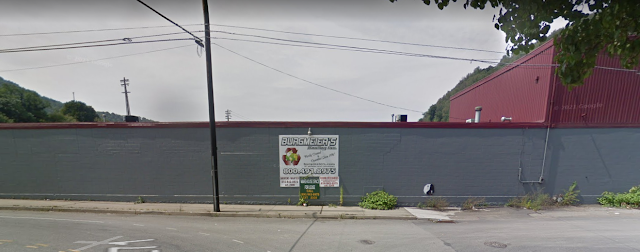 |
| Don Cassata posted This pix is from 1960 of Swank Refractories. A Johnstown company, much like Mesta, is largely overlooked in steel history. Started in the 1800's, they supplied bricks & refractory products for our industry. If you had a steel mill, you probably had Swank bricks in it. Closed for many years, another victim of the demise of steel. Most Johnstowners don't even know it existed. Lou Sebastian: Being from Johnstown and working for Vesuvius I am very familiar with Swank. Their biggest claim to fame was bloating clay available only from Clymer Pa. near Johnstown. Prior to bloating bricks in ladle linings, it was very difficult to get a tight seal and prevent burn throughs. Swank sold this clay brick worldwide. Also, a bloating clay nozzle would help maintain a constant flow rate when pouring into the ingot mold. After Swank went out of business, Vesuvius bought the Clymer property and shipped the clay to Germany to make nozzles and then back to USA for sale. Obviously this was not practical and the project was discontinued. Slidegates came on about the same time. Kevin Regan: Lou Sebastian Hello “Uncle Lou”! How’s retirement treating you? I’m still about 5-6 years away. Your comments are spot on. The technology advancements of “clean steel “ in the 1980’s and 1990’s necessitated the development of more corrosion resistant refractory bricks. So the demise of Swank wasn’t necessarily caused by the demise of antiquated steelmaking practices. Those companies like Vesuvius, HW, Resco, Refratechnik, etc all survived because of their R&D achievements. Just think what the refractory industry will look like in the next 40-50 years! Ray Schloss: When I worked for the Pittsburg & Shawmut RR in the early 90’s, we had 3 firebrick companies. Continental Clay in Kittanning would truck to our freight house to load, Freeport Brick would load boxcars from their own spur in Reesedale, PA, and I’m forgetting another one. Richard Allison: My dad was a supervisor for Davis Firebrick and there was an A.P. Green plant near us that made high duty and super duty firebrick. I think Davis had a tunnel kiln but Green had those old beehive ovens that some used natural gas or charcoal/coke. The railroad boxcars used straw for cushioning the brick, especially when the car was humped. I must be getting old. James Ashcom: Stopper sleeve. First brick next to stopper. I work at this refractory yard 1975 to about 1988. I worked in the machine shop which produced the die work to make the different designs of refractory. Robert Morris: I thought they were stopper rod sleeves. Chad Ramsey: David Havener Sr still one of the biggest refractory suppliers. Dave Kurtz: Looks like stopper rod sleeves. Lloyd Hanning: Dave Kurtz Yep, exactly right Dave! When we went to slidegates it sure made life a lot easier! [And there are some comments about bent stopper rods.] |
Swank started in the 1850s as a pottery company. [TheStoneyCreek]
 |
| The Wilmore, Pennsylvania Neighborhood post 1977 - Camper trailer embedded in the side of "The Swank Refractories" building on Maple Avenue (Swank Brickyard at the end of Maple Avenue) in the Woodvale area of Johnstown during the Flood of 1977. Photo courtesy of mars2999 via https://www.flickr.com/photos/13860679@N08/with/7612709164) — with Judy Schafer. |
 |
| Street View |
My grandfather, Harry Calvert, who owned concession stands outside the big top of one of the big circuses, said that he had joined the circus when his parents were killed in the Johnstown Flood, apparently referring to flood of 1882. A friend of mine from Johnstown, on a visit home inquired for me and was told that people named Calvert had "run the refractory factory up on the hill." Does anyone have any information on such a Calvert family?
ReplyDelete